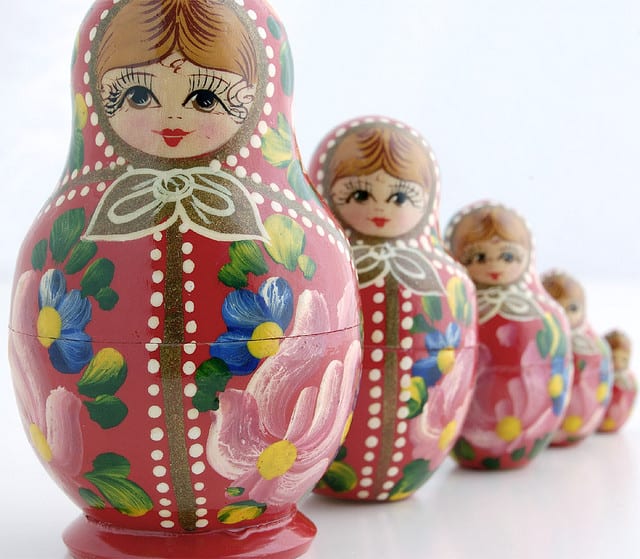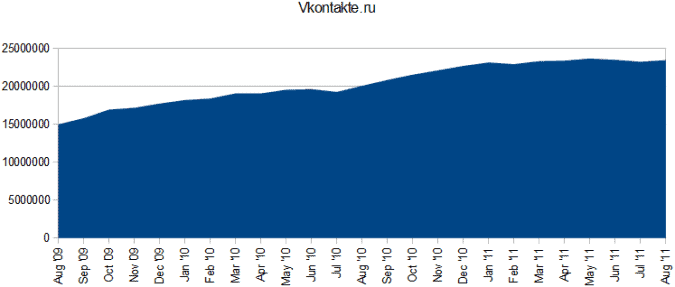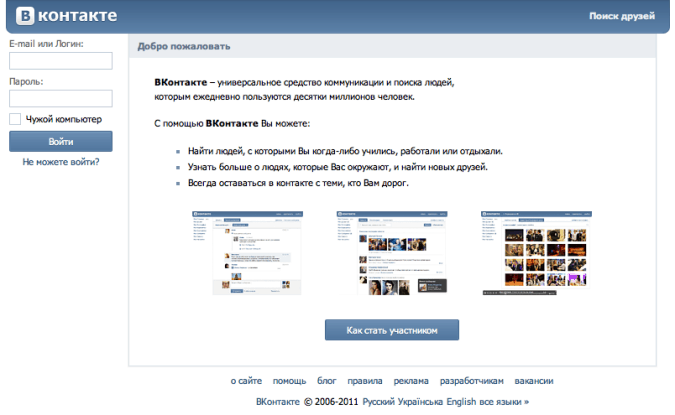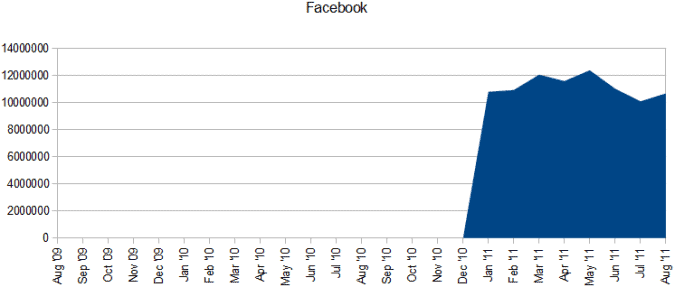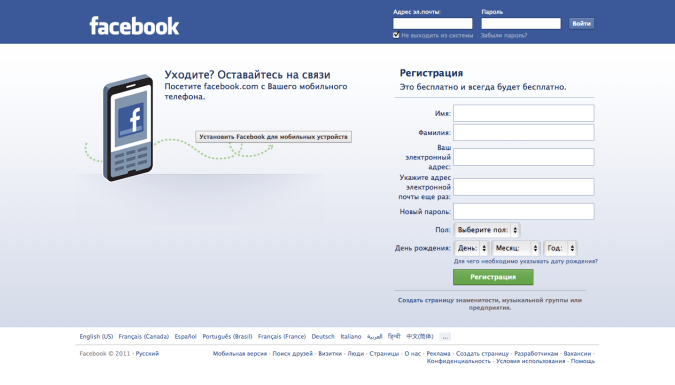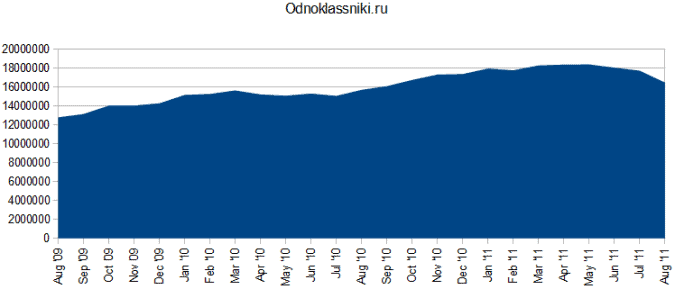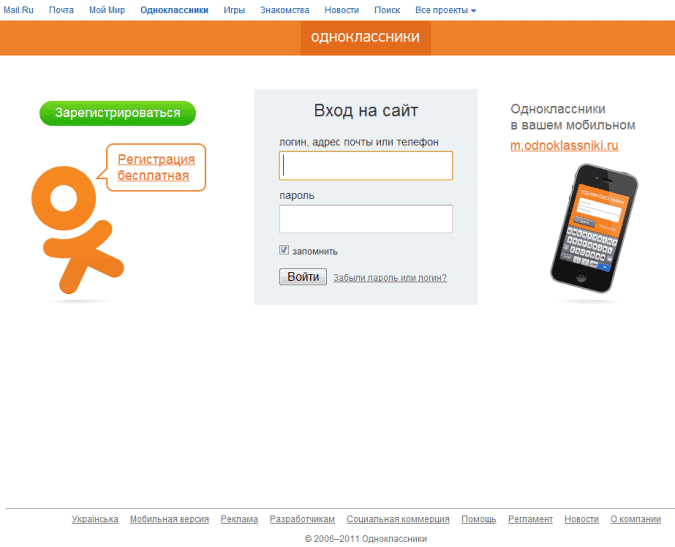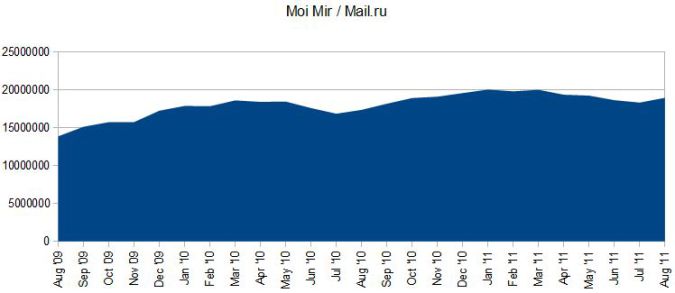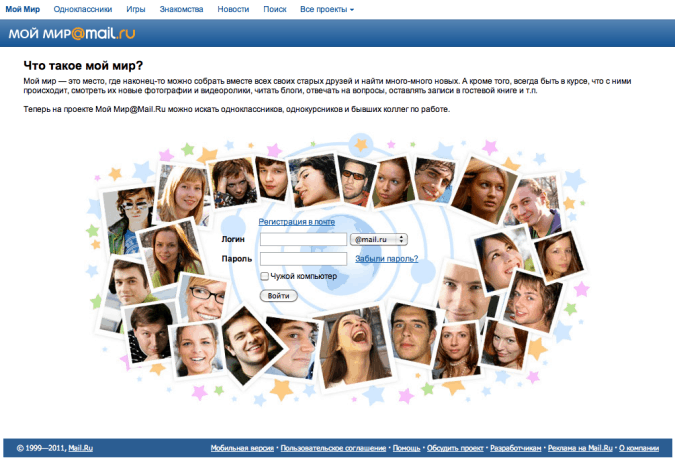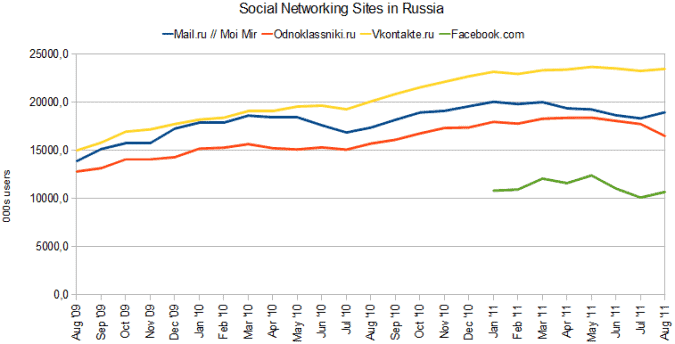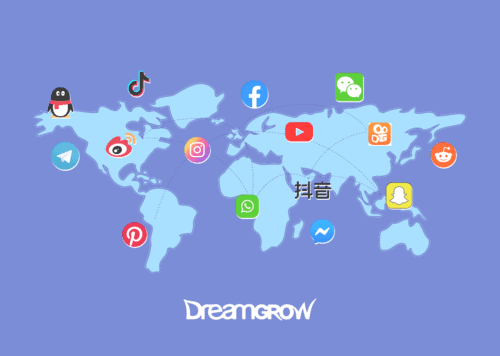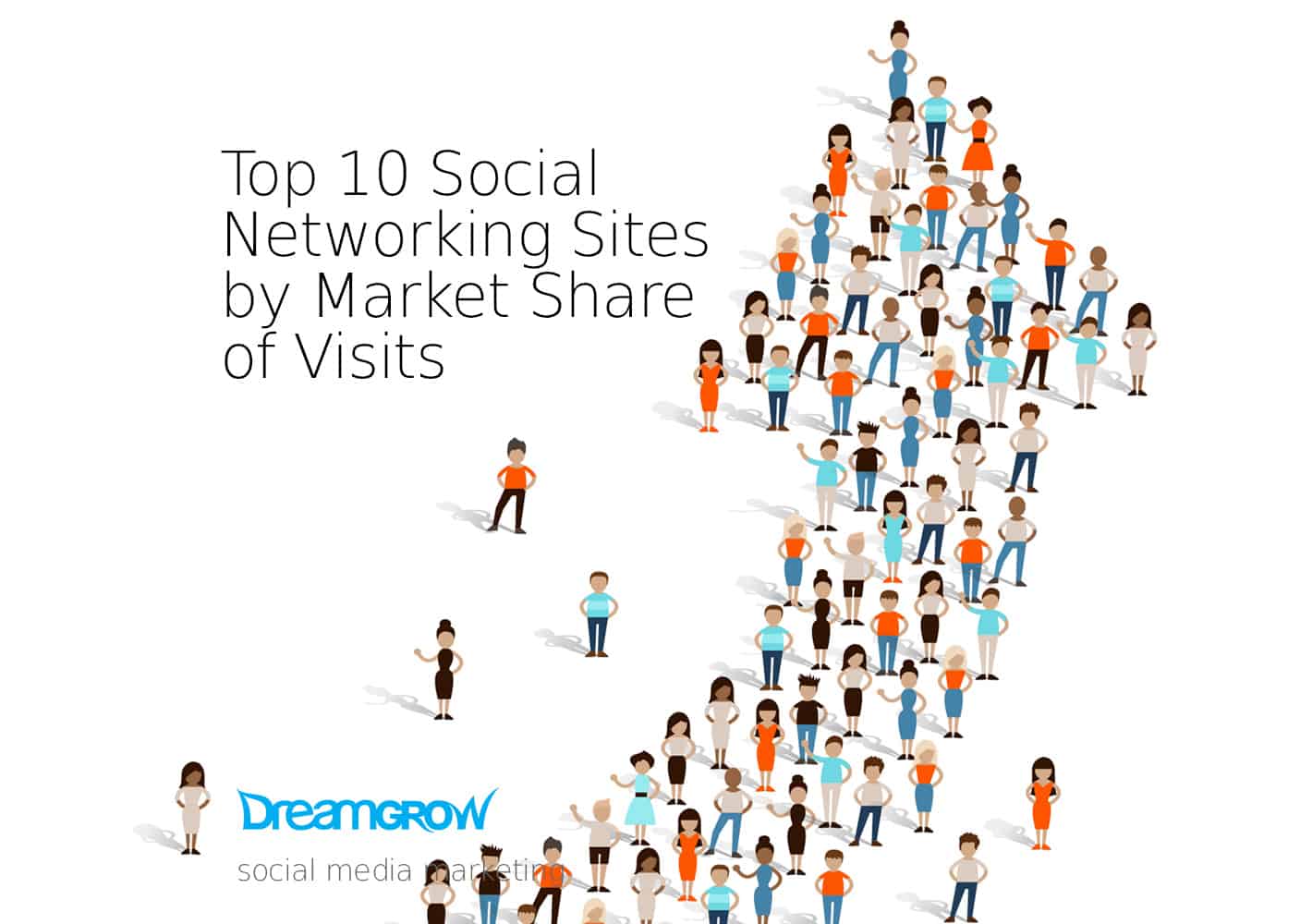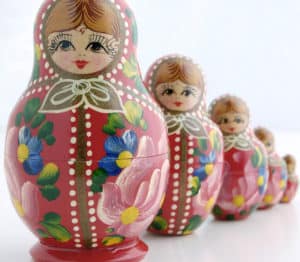
Part of this can be explained by the relatively low Internet penetration in the country, which means that the existing user base is skewed towards the technological elite who are intense users of all IT products and services, not just social media.
Another part can be explained by the ease of access to illegal music and movies via Russian social media sites. And yet further explanation could be due to Russians’ disillusionment by their State-controlled and State-friendly broadcast media, as further detailed in a recent article on Radio Free Europe.
From a commercial perspective — given how central such sites are to Russian Internet users — it’s important for online sellers to develop an understanding of the major social networks and their dynamics. This post will focus on “social” social networks as opposed to those more oriented towards business networking.
Oligarch Domination of Russian Social Media Extends Globally
While we’re laying out the social media landscape and discussing the pluses and minuses of the different players, one thing to bear in mind is that the ultimate control of many of them rests with the Russian oligarch Alisher Usmanov.
He is the main financial backer of Digital Sky Technologies, which owns a big share of vKontakte, the majority of Mail.ru (Odnoklassniki and MoiMir) and significant minority interests in US-based Facebook and Twitter.
AND, surprise-surprise, LiveJournal was bought in 2007 by SUP Media, a Russian company jointly controlled by Alexander Mamut and… Alisher Usmanov. The global tentacles reach out to Groupon, Spotify and Zynga as well.
Profiles of the Major Players
The following is an unscientific overview of the major Russian social media sites, with anecdotal comments about their trends and characteristics. Because of the difficulty in obtaining comparable and reliable statistics from third parties, the observational approach provides a richer insight into how users actually interact with the different social media properties, and how this interaction affects the value of each property.
vKontakte
vKontakte: Reach and engagement: 23.4 million users (54.2% of the Russian online population), 20 minutes average daily duration (Source: TNS)
Trend: Market leader with a stable market share; as it is so large, growth is generally in line with the growth in the general Russian online population.
VKontakte is the market leader and an overt rip-off of Facebook, even down to the colour scheme. Among its stickier applications are file sharing of pirated music and movies, and games adapted from other platforms such as “Happy Farmer” (which originated in China).
VKontakte was launched in 2007 and continues to introduce new features. It’s a formidable competitor to Facebook in Russia and Russian-speaking countries. Active users tend to be younger, student types although the company claims that users over age 25 account for more than 60% of their audience (it’s hard to know whether this includes inactive users or not).
The company has the size and scale to continue to innovate, and their focus on the Russian market should provide a continuing competitive advantage. Because of its dominance, it has a major impact on the overall statistics for social media usage in Russia, and can explain some of the reason why Russia is an apparent outlier.
Lots of users keep vKontakte on in the background during their Internet sessions, listening to streaming music or watching movies. They are not necessarily actively engaged with the site. Also, a lot of users have been complaining about spam originating on vKontakte, as a result of hackers gaining access to their user accounts.
Reach and engagement: 10.7 million users (24.7% of the Russian online population), 3 minutes average daily duration (Source: TNS).
Trend: Rapid growth during initial takeup by Russian elites, but has reached a plateau.
Since Facebook started offering a Russian interface, it has been rapidly gaining Russian users and traffic, largely at the expense of vKontakte. It attracts a young, globally-minded audience who have international friends already on Facebook with whom they can connect on a common platform. Unfortunately, this is a rather narrow demographic in Russia – accounting for at most 10% of the population.
The user interface and ease of use of Facebook are superior compared to vKontakte, but most users will continue to maintain accounts on both platforms. Unlike China, Russia does not impose any barriers to Facebook’s growth. Its status as a laggard is purely due to competitive market conditions.
Interestingly, Facebook lags badly behind its Russian competitors at 3 average daily minutes on site. Anecdotally, this could be a result of a large number of Russian users arriving at Facebook by accident, after clicking a “Like” button on another site.
Odnoklassniki
Reach and engagement: 16.5 million users (38.1% of the Russian online population), 25 minutes average daily duration (Source: TNS).
Trend: Stagnant / declining market share.
A site which focuses on sharing of photographs with your “odnoklassniki” (schoolmates). Founded in 2006, it predates vKontakte and the Russian version of Facebook and is part of the Mail.ru platform. The user interface reflects its relative age — it’s full of flashing images and lacks the design sophistication of Facebook.
Some of its stickier features include the ability to rate other people’s photos, to see who has viewed your profile, online chat, and a real-time listing of who’s on the site (with links to their profiles). Certainly appealling to voyeuristic tendencies, the site offers an interesting combination of features which could easily fit with online dating sites.
Indeed, efforts at monetization have included charging for the ability to give “premium” ratings to photos and virtual roses and other gifts. Odnoklassniki has a relatively higher concentration of users in the 25-35 age bracket, which is somewhat older than vKontakte’s core audience.
Active users have been trending downwards as people migrate to Facebook and vKontakte, athough they continue to add features popular in other Russian social media sites, like games, streaming media and video hosting. Still maintains a loyal following and exhibits the highest average daily minutes on site.
MoiMir
Reach and engagement: 18.9 million users (43.8% of the Russian online population), 9 minutes average daily duration (Source: TNS).
Trend: Stable / growing in line with overall market.
Also part of the Mail.ru platform, MoiMir was launched in 2007 and draws in users through its integration with the platform’s e-mail application, which is the most popular in Russia.
The low average daily usage figures reflect the fact that many people arrive at the site as a result of their e-mail accounts being with mail.ru, possibly clicking on content within their mail application which then transports them to the site. MoiMir has the standard features of social networking sites, with not much to distinguish its offerings.
It’s hard to see it existing separately in the long term, given the common ownership with Odnoklassniki. In fact, in 2011 Odnoklassniki relocated to the offices of Mail.ru which could portend a consolidation of the two social media projects.
(Special thanks to TNS Russia for providing the usage and reach statistics quoted above, which are from the month of August 2011 and are based on a sample size of 100 000+, with users aged 12-54 years).
Other Social-Oriented Media Platforms
Although not strictly fitting within my definition of social media in this post, I’d like to briefly mention other popular players in related areas:

Ex-President Dmitry Medvedev is an enthusiastic user, along with more than a million of his compatriots. However, like the politician himself, early enthusiasts have become disillusioned.
Research by Yandex in July 2011 indicated that only 6.4% of Russian Twitter accounts were active on a daily basis (vs. 60% in March 2010). In April 2011, Twitter introduced a Russian interface to their website which in itself is unlikely to make much of an impact on its adoption in Russia, given the limited interaction of Twitter users with the website itself.
Twitter does not report its total user accounts by country, but according to Alexa rankings it was the 17th most popular site in Russia as of October 2011, which certainly overstates its relative popularity with Russians.
LiveJournal

Although a .COM site (vs .RU) it came to be dominated by Russian users who fondly refer to the site by its Russian initials “??”. According to the company’s website, the Russian segment of LiveJournal has more than 30 million users monthly, 5 million Cyrillic accounts and 250 million posts.
Image credit _Zeta_
